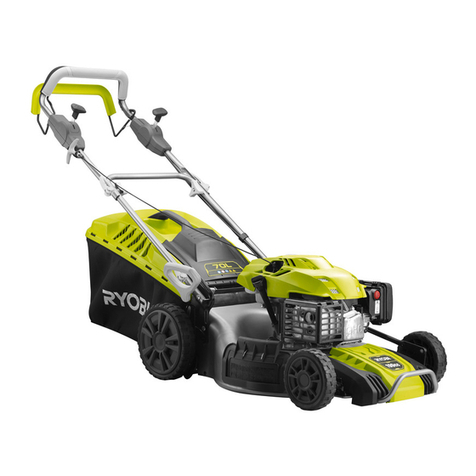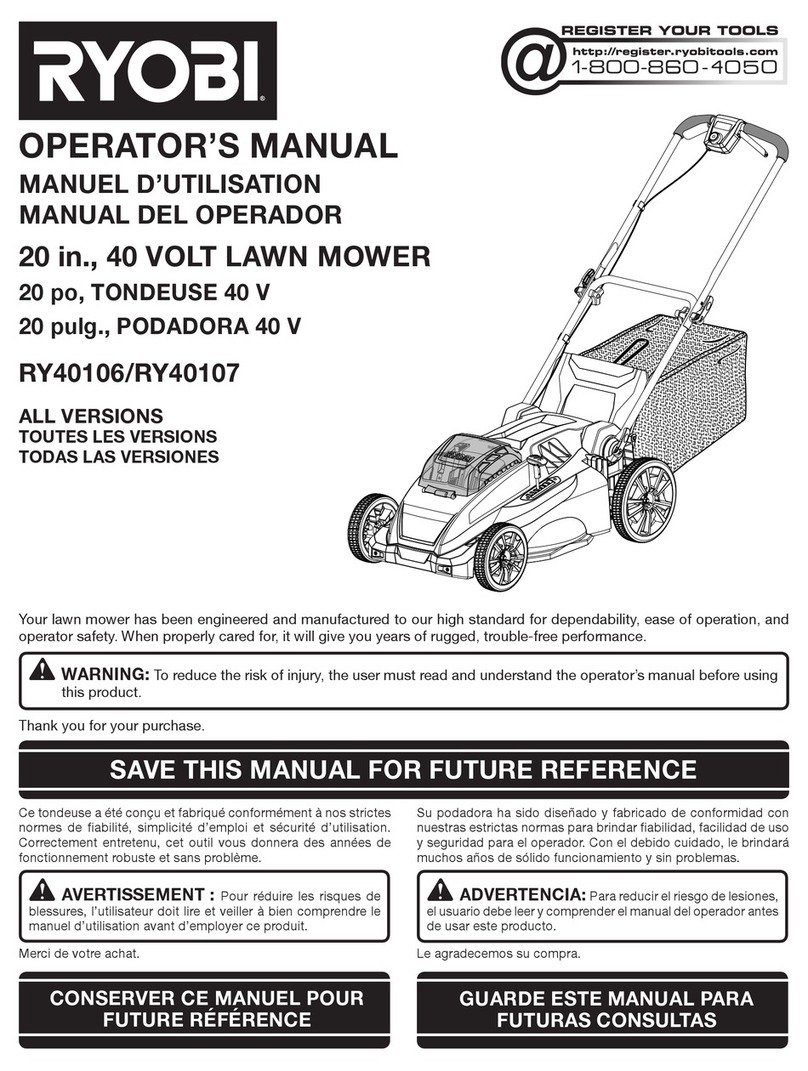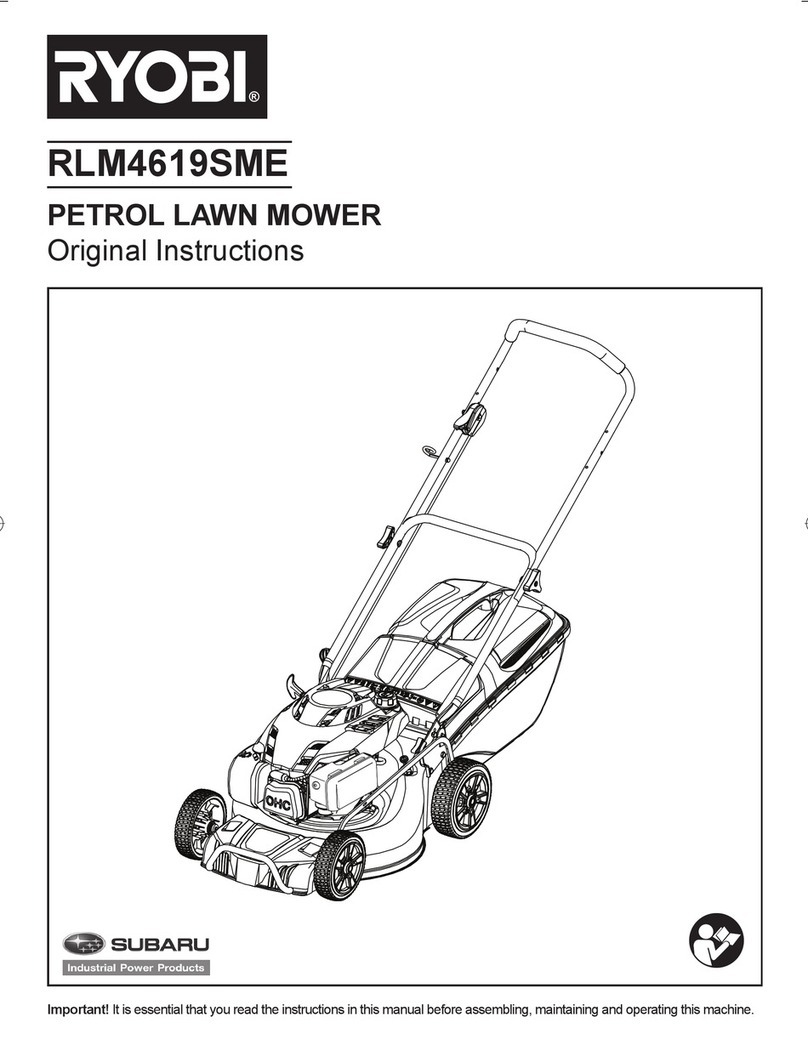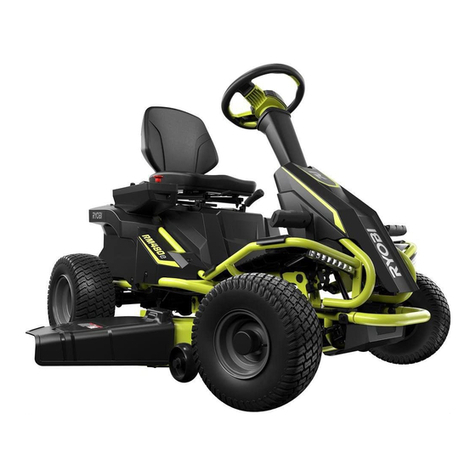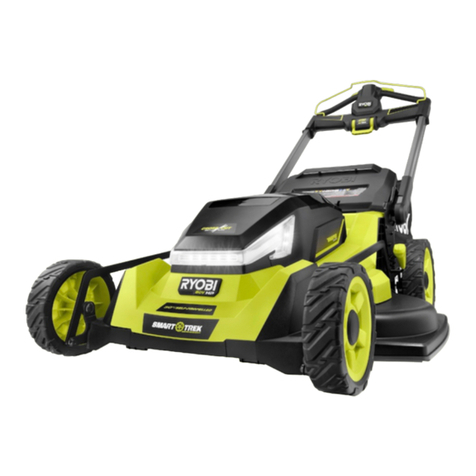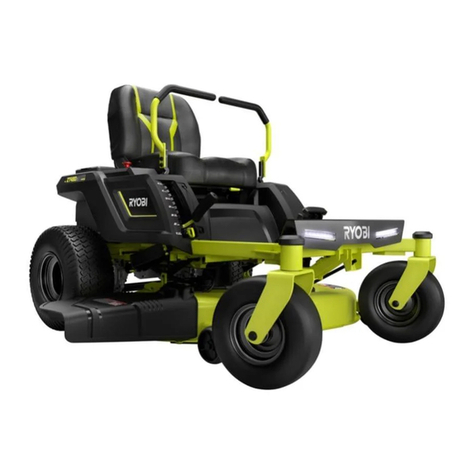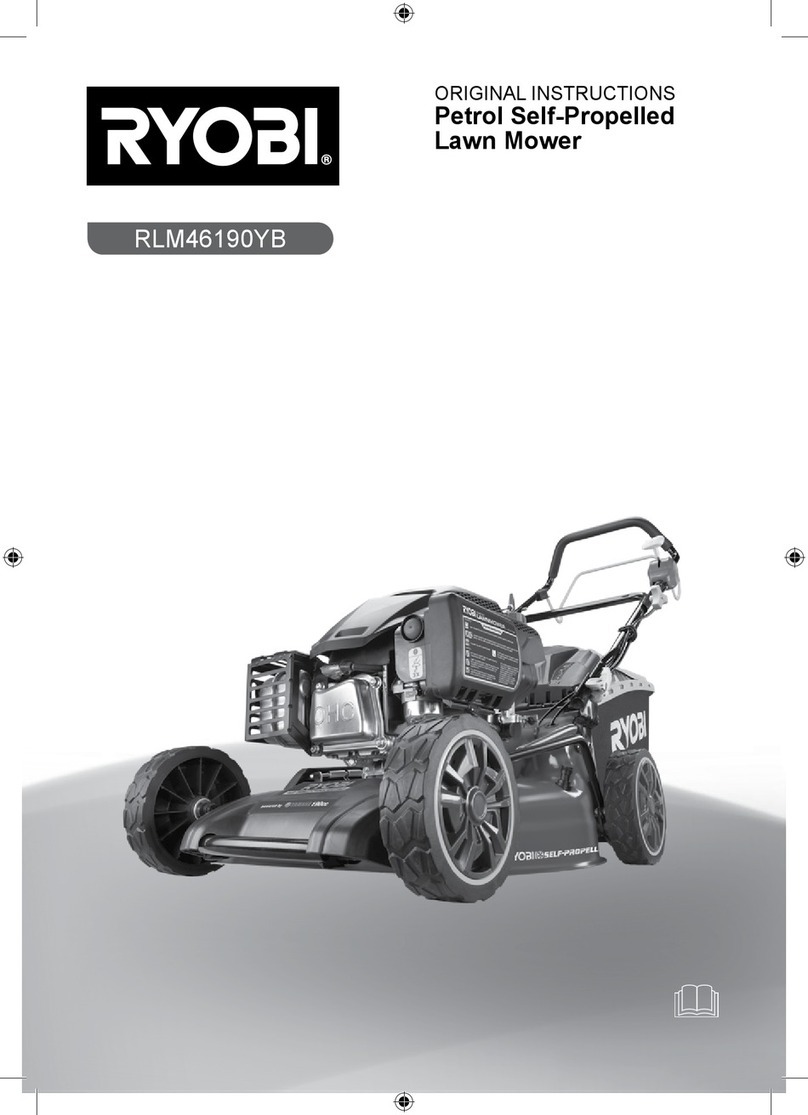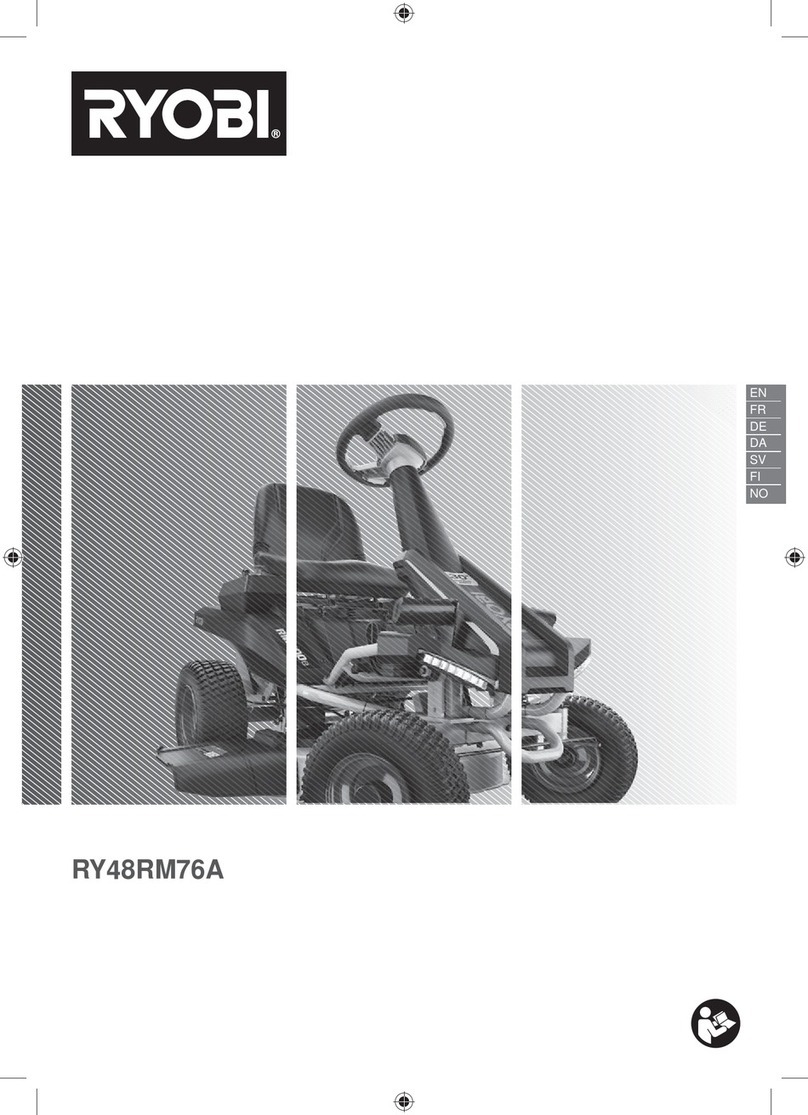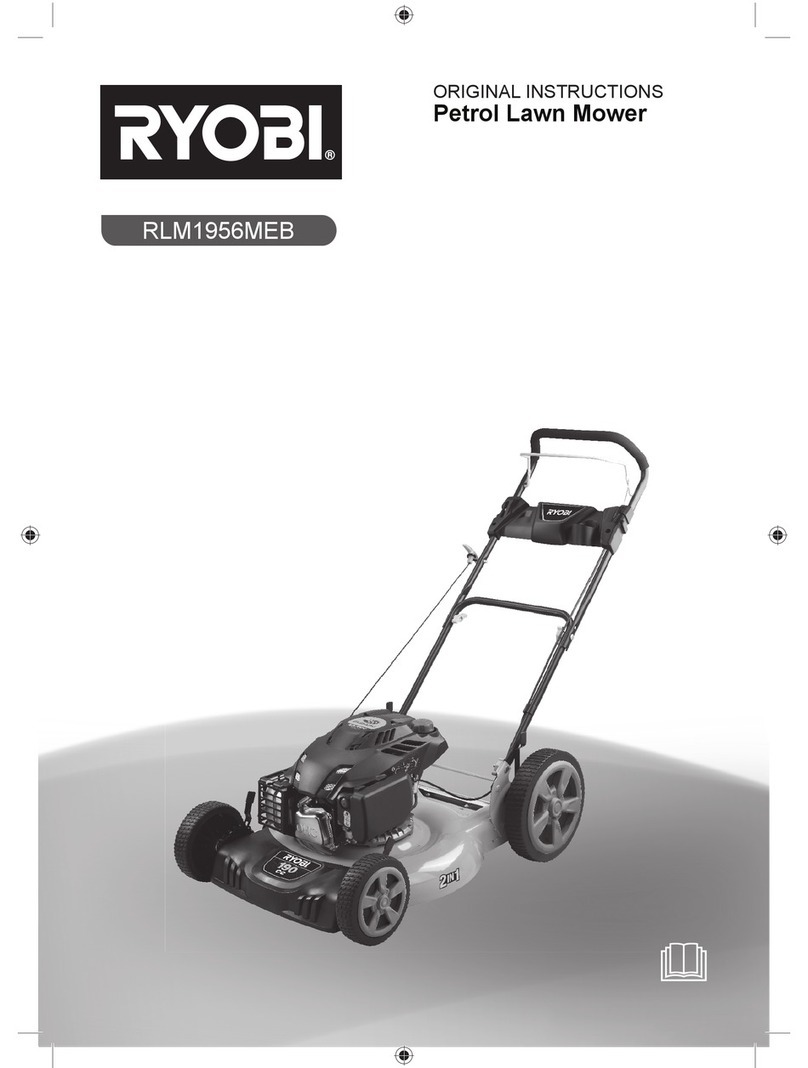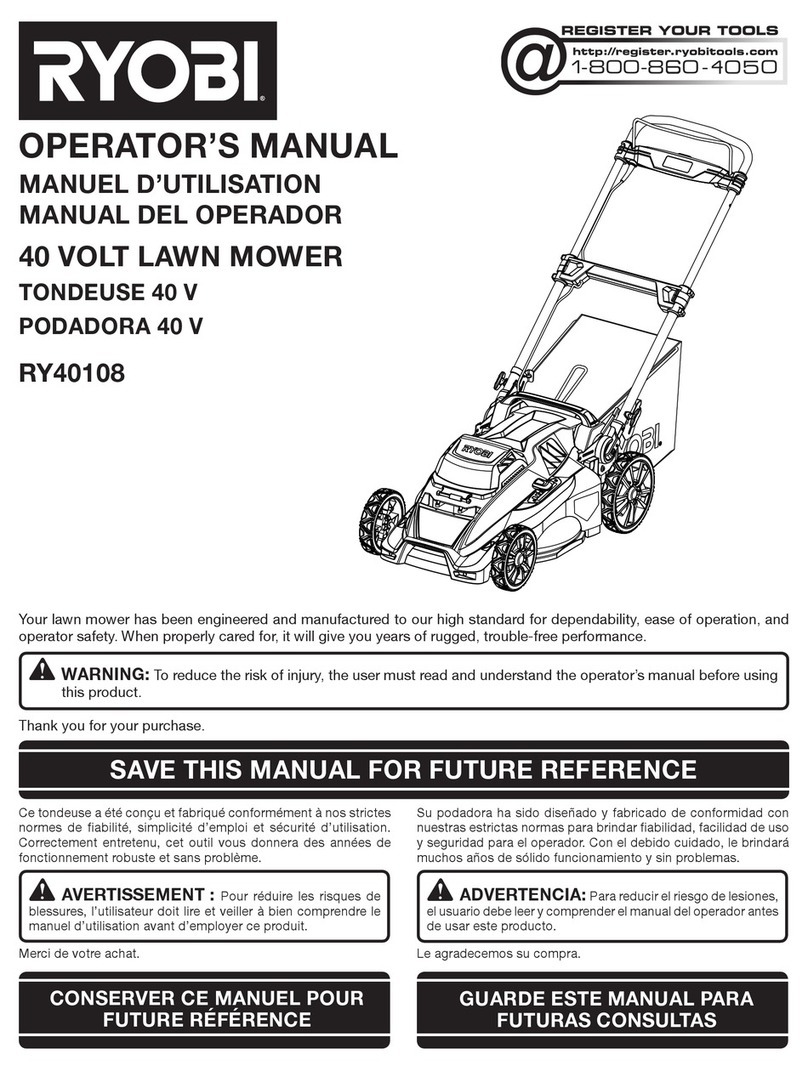
3 — English
IMPORTANT SAFETY INSTRUCTIONS
plug will fit into the polarized wall outlet only one way.
If the plug does not fit fully into the wall outlet, reverse
the plug. If the plug still does not fit, contact a qualified
electrician to install the proper wall outlet. Do not change
the equipment plug, extension cord receptacle, or exten-
sion cord plug in any way.
Ground Fault Circuit Interrupter (GFCI) protection should
be provided on the circuit(s) or outlet(s) to be used for
the lawn mower. Receptacles are available having built-
in GFCI protection and may be used for this measure of
safety.
Inspect lawn mower cord periodically and if damaged,
have it repaired by an authorized service facility. Inspect
extension cords periodically and replace if damaged.
Keep handles dry, clean, and free from oil and grease.
Warning — To prevent electric shock use only with an
extension cord suitable for outdoor use, such as SW,
SOW, STW, STOW, SJW, SJOW, SJTW, or SJTOW.
Extension Cord - Make sure your extension cord set is in
good condition. When using an extension cord, be sure
to use one heavy enough to carry the current your prod-
uct will draw. For lengths less than 50 feet, No. 14 AWG
extension cord should be used. An undersized cord will
cause a drop in line voltage resulting in loss of power and
overheating. To reduce the likelihood of disconnection of
lawn mower cord from the cord set during operating use
the cord retainer described in this manual (Figure 9).
Under normal usage the catcher assembly is subject
to deterioration and wear and should, therefore, be
frequently checked for replacement. Only use identical
replacement catcher assemblies.
Don’t Abuse Cord — Never pull lawn mower by cord or
yank it to disconnect from receptacle. Keep cord from
heat, oil, and sharp edges.
Risk of death or serious personal injury if power lines or
electric cords are contacted. Never operate mower over
electrical sources, cords, or wires.
Clear the work area before each use. Remove all objects
such as rocks, tree nuts, sticks, metal, wire, bones, toys,
or other objects which can be thrown by the blade. Stay
behind the handle when the motor is running.
Avoid holes, ruts, bumps, rocks, property stakes, or other
hidden objects. Uneven terrain could cause a slip and fall
accident.
Do not mow near drop-offs, ditches, or embankments.
Mow across the face of slopes, never up and down.
Exercise extreme caution when changing direction on
slopes.
Plan your mowing pattern to avoid discharge of material
toward roads, sidewalks, bystanders and the like. Also,
avoid discharging material against a wall or obstruction,
which may cause the material to ricochet back toward
the operator.
Do not mow on wet grass or excessively steep slopes.
Poor footing could cause a slip and fall accident. Walk,
never run.
Use extra care when approaching blind corners, shrubs,
trees, or other objects that may block your view.
Do not pull the mower backward unless absolutely nec-
essary. If you must back the mower away from a wall or
obstruction, first look down and behind to avoid tripping
or pulling the mower over your feet.
Never direct discharged material toward anyone. Avoid
discharging material against a wall or obstruction. Ma-
terial may ricochet back toward the operator. Stop the
blade when crossing gravel surfaces.
Objects struck by the lawn mower blade can cause severe
injuries to persons. The lawn should always be carefully
examined and cleared of all objects prior to each mowing.
If the lawn mower strikes a foreign object, follow these
steps:
• Stop the lawn mower by releasing the blade control
lever, wait until the blade comes to a complete stop,
and disconnect extension cord from power supply.
• Thoroughly inspect the mower for any damage.
• Replace the blade if it is damaged in any way. Repair
any damage before restarting and continuing to operate
the mower.
Stop the motor, wait until the blade comes to a complete
stop and disconnect extension cord from power supply
before unclogging the chute. The cutting blade continues
to rotate for a few seconds after the motor is shut off.
Never place any part of the body in the blade area until
you are sure the blade has stopped rotating.
If the mower should start to vibrate abnormally, stop the
motor, disconnect the extension cord from the power
supply, and check immediately for the cause. Replace
the blade if it is unevenly worn or damaged in any way.
Vibration is generally a warning of trouble.
Service on the product must be performed by qualified
repair personnel only. Service or maintenance performed
by unqualified personnel could result in injury to the user
or damage to the product.
Use only authorized replacement parts when servicing
the product. Use identical replacement blades only. Use
of unauthorized parts may create a risk of serious injury
to the user, or damage to the product.
Maintain or replace safety instructions labels, as
necessary.
Disconnect from power supply — Disconnect extension
cord from power supply before storing, servicing, or
changing accessories such as blades. Such preventive
safety measures reduce the risk of starting the tool ac-
cidentally.

